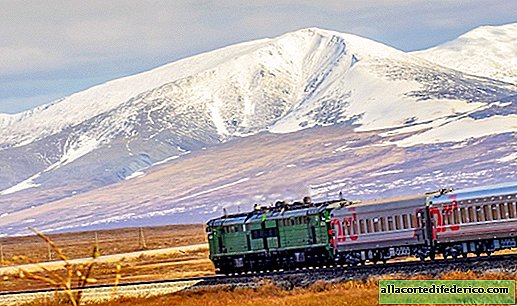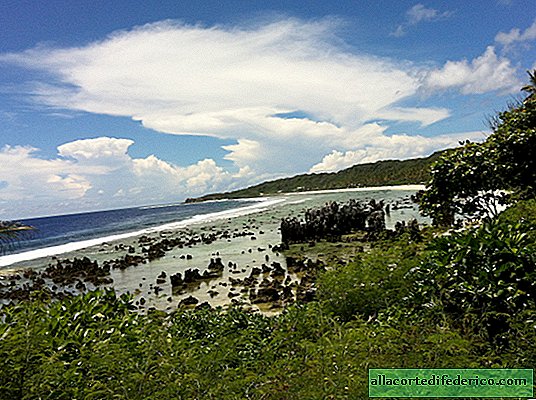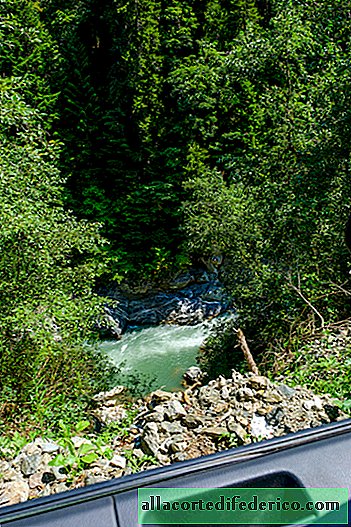Transpolar highway 70 years later: the new life of the grandiose project of the USSR
The discovery of colossal hydrocarbon reserves in the north of Western Siberia required tremendous costs for the creation of infrastructure. Hundreds of kilometers of roads, including railways, stretch to cities and deposits. In this regard, it is interesting to recall the Trans-Polar Railway, the construction of which began more than 70 years ago. This grandiose project of the USSR was only partially realized, but today it is experiencing a second youth.

The development of regions with severe climatic conditions has always been a difficult task for humanity, and the north of our country is no exception in this regard. The key to successful existence in the north is an established infrastructure that allows organizing year-round supply of the territory. One of the stages in the development of the circumpolar regions was to be a railway line with a length of about 1,400 kilometers, leading from the northern cities of the European part of the USSR to the industrial areas of the Yenisei estuary in northern Siberia. I must say that this idea was not so new and was voiced back in the days of the Russian Empire. The construction of a railway line, which would connect the northern regions of the country like the Trans-Siberian Railway, passing through the cities of southern Siberia and the Far East, was necessary for the stable development of the region, and also had strategic importance.

The first step towards the implementation of this project is the successful construction of the Kotlas-Vorkuta railway line, which was completed in 1941. The main construction began after the end of World War II - in 1947. Construction of the road was carried out by prisoners and civilian workers in the most difficult conditions of the north. In almost two years, by December 1948, a section of about 200 kilometers was built that connected the Chum railway station in the Komi Republic and the city of Labytnangi of the Tyumen Region, which is located opposite Salekhard on the Ob River. This section of the railway is still operating successfully.

Further project implementation was carried out at an accelerated pace, and it was planned to complete the construction by 1955. One of the main mistakes in the construction of such a grandiose structure, experts call the construction of the canvas. To speed up the work and reduce costs, it was decided to erect the so-called light rail. By the same principle, by the way, the initial construction of the Trans-Siberian Railway was carried out. But at the level of technological development of that time, the construction of the canvas in the region with permafrost turned out to be a very difficult task. Already constructed sections of the road had to be repaired and rebuilt annually after thawing soils.

By 1952, the bulk of the work was completed and freight and passenger trains even ran along the Nadym-Salekhard railway line. But the poor quality of the constructed road caused a lot of problems: the speed of trains was extremely low, and emergency situations were not uncommon.
Immediately after the death of Stalin in March 1953, a decree was issued to cease construction work on the Salekhard-Igarka railway. Other tasks were a priority, and the Trans-Polar Railway temporarily lost its relevance. Left without constant care, the road gradually collapsed, and even those sections of it, on which trains once went, became worthless. Part of the track was dismantled in the 60s, and the rails were used to build roads between Norilsk industrial facilities.

In the 70s, after the discovery of huge oil and gas reserves in the north of Western Siberia, the railway in this region again became popular. The Nadym - Korotchaevo railway line was reconstructed, and to this day, both freight and passenger trains are moving along it.
Today, there are many plans for the construction of railways in this part of Siberia; they are collectively called the Northern Latitudinal Railway. An agreement has already been concluded on the construction of the Nadym-Ob section and the construction of a railway bridge over the Ob river in the Salekhard region. Much has already been done and it remains to believe that the grandiose project for the construction of the Trans-Polar Railway will soon be successfully completed.

It is likely that this road will not only have economic value, but will also affect the development of the recreational potential of the region. After all, tourist trains run along the only railway line in Alaska only so that passengers can enjoy the beauty of nature. Perhaps in our country there will be enterprising people who organize a new excursion route, for example, the Vologda-Yenisei Railway Tour, which will take place in the most picturesque regions of northern Europe, the Polar Urals and Siberia.


















